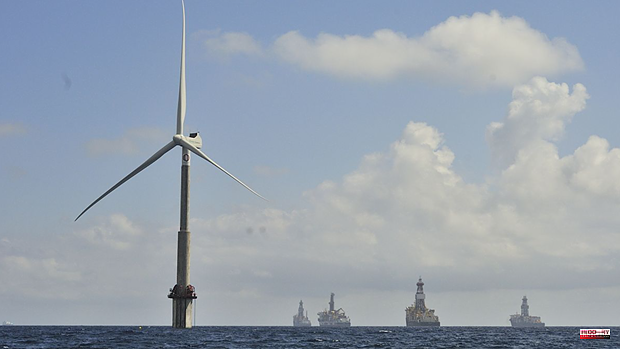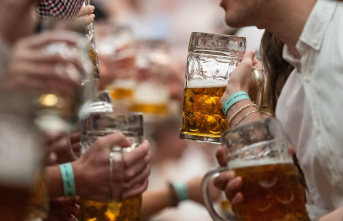The Canary Islands are facing an economic sector that could revolutionize the productive model of the islands, a true manna for the future and that, however, could escape it. It is about the Blue Economy, an economic niche with great growth potential and an opportunity that the islands could lose due to the slowness of the bureaucracy and the time of licenses and permits that stifle investors.
Currently, the different sectors of the Blue Economy represent 6.14% of GDP and 7.04% of employment in the Canary Islands, as confirmed by the Blue Economy Activity Report in the Canary Islands 2021 (IAEA 2021). This report has several editions, but this is the first one that includes the situation derived from the Covid-19 pandemic and that has highlighted the resilience capacity of several of the Blue Economy niches.
In a context of health and economic crisis and great uncertainty, the Blue Economy contributed to the entry of some 2,403 million current euros into the islands in 2020, in addition to generating 57,493 direct jobs.
The Blue Economy, and especially the new growing sectors such as biotechnology or offshore wind energy "are sectors of opportunity, and the opportunity is now", since they are viable options that are on the table and are committed to the Canary Islands as the first place of Spain for its large-scale development, has advanced the president of the Technological Center of Marine Sciences, José Luis Guersi.
They have "enormous potential" but also a "serious problem" and that is that at these "crucial" moments the administrative process, permits and start-up "is very heavy." "Facing this new opportunity with agility is of enormous importance at this time", he stressed, to prevent investments from being diverted to other regions as happened in the past. Specifically, Guersi has reminded ABC of one of the losses suffered by the Canary Islands, that of current aquaculture. The aquaculture management plan »took 12 years to develop«, and therefore does not address new forms of development that aim to move away from the coast and seek other depths. The heaviness and delay in processing, as well as the current stagnation in an obsolete plan, has caused "lost potential investors who, in this case, have gone to Andalusia." With this precedent, Guersi assures that "something similar could happen in offshore wind power", in which "the Canary Islands have the opportunity to have an important position but, if the bureaucracy is not facilitated, it will be lost".
In his opinion, sustainability is only understood from an environmental point of view and not from a social or business point of view, and this is one of the bureaucratic obstacles faced by investors. The director of the Technological Center for Marine Sciences, Sebastián Hernández, has agreed on the same idea. In Blue Economy "these are cumbersome procedures for any investor" and currently from the beginning of the procedures until the start-up the average is 6-7 years, "Not all companies can assume the delays", he advances, although he has appreciated the will of the administrations to turn this situation around, since "they are all for the job", he stressed.
The Blue Economy Activity Report in the Canary Islands 2021 (IAEA 2021) has divided the activity sectors into 10, accounting for some of the parameters to offer an X-ray of the weight of this economy in the islands. Consolidated sectors such as the artisanal fishing sector have 26 fishermen's associations and 3 cooperatives that produce 10,363 tons of fish with a value of 31.8 million euros. The Canary Islands thus have the fourth Spanish regional fleet with 724 fishing vessels dedicated to this activity.
Maritime transport, highly resistant to the pandemic, is made up of 60 shipping companies with 109 ships registered in the REBECA, which transport 33.8 million tons of merchandise in 23,414 ships that make a stopover in the Canary Islands. There are 28 commercial ports in 7 of the 8 Canary Islands, which provide services and facilities for reception, handling and storage of 36.9 million tons of merchandise, 8 million passengers, 2.4 million vehicles, 1.4 million TEUs and 2.8 million fuel supplies. In naval repair, the islands have 3 shipyards and 89 auxiliary naval workshops that carry out maintenance, repair and transformation services, afloat and in dock. This sector has a registered activity at the date of the report of 216 vessels with 74 million GRT and offshore platforms. Regarding growing sectors, such as aquaculture, in the Canary Islands there are 12 producing companies and 5 trading companies, with 13 marine farms located in Gran Canaria, Lanzarote, La Palma and Tenerife. Their activity generates a value of 41.2 million euros, mainly in the marketing of sea bream and sea bass.
Cruise ships in the Canary Islands have made 511 stopovers on the islands, with 862,000 cruise passengers in the seven main ports of the archipelago. Regarding nautical tourism, the Canary Islands continue to grow, with more and more activity in the 42 sports ports and marinas with 10,306 berths that bring together 776,000 movements of pleasure boats. Regarding water sports, the Canary Islands are on the rise after the pandemic. On the date analyzed by the report, there are 15,854 federal licenses, 499 active tourism companies related to the sea and 100,000 people who carried out maritime excursion activities on boats in 2020.
On the other hand, it is the emerging sectors that have the possibility of turning the Canarian economy around. In desalination, there are 301 desalination plants located on 6 islands, with a capacity of 663,463 cubic meters per day.
Marine renewable energies, according to the analysis of the report, in the Canary Islands have optimal offshore wind resource conditions, knowledge, test bench facilities in which industry prototypes are tested and a sector specialized in O
At this time, the only two offshore wind turbines in Spain are in the Canary Islands, specifically in Telde and Arinaga (Gran Canaria), with an installed capacity of 10MW. In the Canary Islands there are areas of up to 200 square kilometers with wind power capacity and depth with capacity for 700 W/m2 and a production 70% higher than the average wind power production in the Canary Islands. On the other hand, this sector is more, it is offshore wind power but also wave, tidal, thermal, among others.
Biotechnology is understood as the area of knowledge that, with a multidisciplinary character, uses a set of techniques and technologies that use organisms or parts of them, as well as any other type of technology and disciplines that can converge with it and that allow the improvement or the development of innovative products, processes or applications in different social spheres and sectors of economic activity.
According to the data of the annual report of the Spanish Association of Biocompanies, in Spain during 2019 the process of expansion of the total number of companies dedicated to biotechnology has accelerated significantly, presenting an average growth of more than 20% with respect to the year 2018. Canary Islands, the marine biotechnology sector focuses on biotechnology dedicated to the cultivation of algae, specifically microalgae, and which participates in sectors such as biomedicine, cosmetics, agriculture, cottonology, and the most attractive and with great potential, renewable energy. and gastronomy. On the other hand, this sector still has a lot to offer, since only 1% of the seaweeds existing on the islands have been screened to analyze their potential applications, and only about 6 species of the thousands that exist are industrially exploited in the archipelago.
The Canary Islands have knowledge in the production of micro and macroalgae for different commercial uses, with a value of 1.5 million euros.












